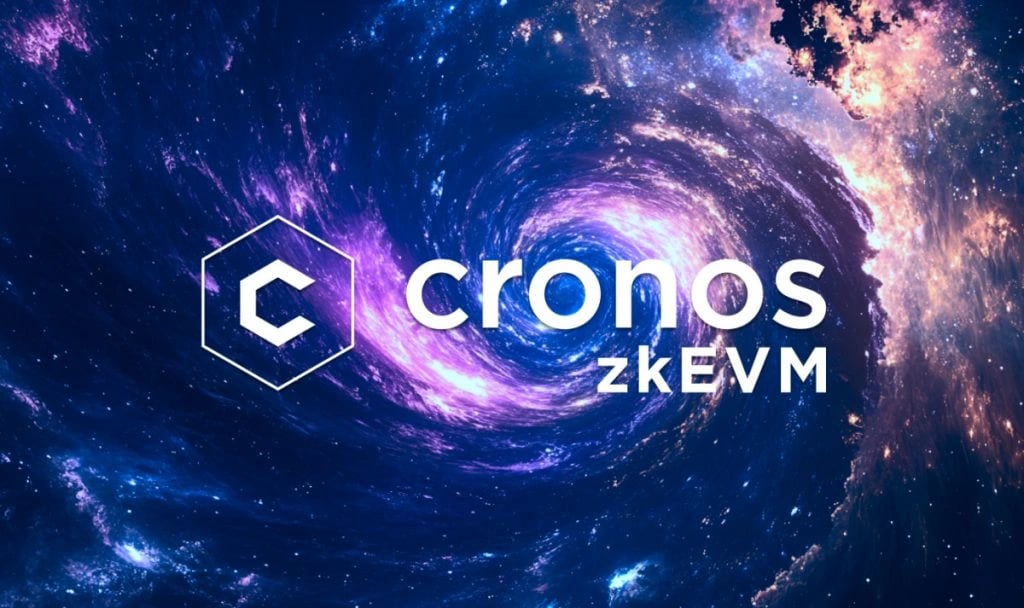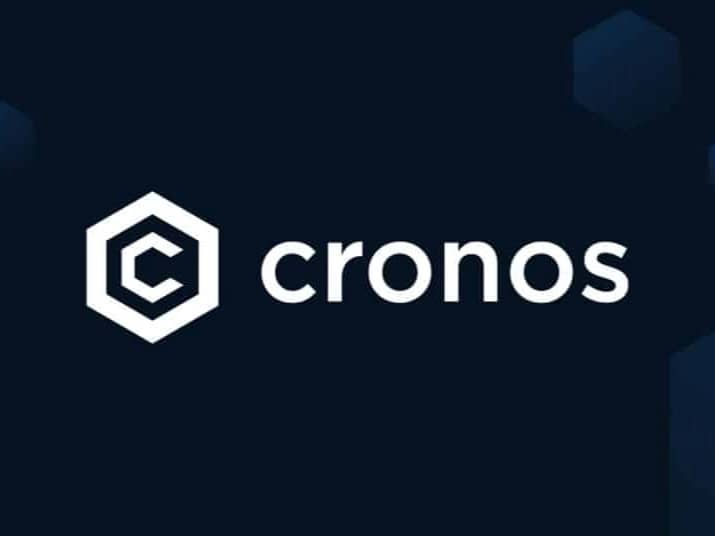订阅 wiki
Share wiki
Bookmark
Cronos (CRO)
Cronos (CRO)
Cronos 是一个支持去中心化金融 (DeFi)、游戏和 Web3 应用程序的区块链生态系统。它具有多个链,包括 Cronos EVM 和 Cronos zkEVM。 CRO 代币用于生态系统内的交易和质押。 [1]
概述
Cronos是一个去中心化的、开源的公共区块链,以其高速、节能和低交易费用而闻名。它通过Web3应用程序(如DeFi和GameFi)支持创作者经济,并旨在成为开放元宇宙的基础。Cronos的生态系统包括三个链:Cronos zkEVM(由以太坊保护的高性能Layer 2)、Cronos EVM(与以太坊兼容且基于Cosmos SDK)和Cronos POS(基于Cosmos的支付和NFT链)。交易费用以$CRO(Cronos的原生货币)或zkCRO(CRO的生息版本)支付。 [2][3]
Cronos EVM
Cronos EVM链基于 Ethermint 构建,采用 Cosmos SDK。它支持链间通信 (IBC) 协议,实现与 以太坊、Cosmos 和其他链的互操作性。这种设置允许用户将资产从这些链引入 Cronos,利用 智能合约 协议和更广泛的 以太坊 应用生态系统。Cronos 采用 权益权威证明 (POA) 共识机制,平衡了去中心化与可扩展的环保处理,旨在实现高交易吞吐量、快速最终性和低费用。这种方法为 以太坊 的 主网 提供了一种更具成本效益和碳中和的替代方案,增强了 去中心化应用程序 和 智能合约 的可访问性。开发者还可以通过 Cronos Labs 获得额外支持,这是一个 Web3 加速器和生态系统发展基金,专注于推进 DeFi、GameFi 和 Cronos 的增长。 [2][3]
Cronos POS
最初被称为“Crypto.org Chain”,Cronos POS 链是一个基于 Cosmos SDK 的 区块链,主要用于 $CRO 质押,并为包括 Crypto.com Pay 在内的多个 Crypto.com 应用程序提供支持。该链旨在支持快速交易,并作为一个公共区块链,促进个人和企业之间的全球交易。交易费用 在 Cronos POS 链上以 CRO 支付。Cronos POS 链还旨在推进 加密货币 在日常环境中的使用,解决传统支付系统和现有区块链的局限性,这些系统和区块链尚未提供安全、可扩展、去中心化的加密支付解决方案。 [4]
Cronos zkEVM
2024年,Cronos Labs推出了Cronos zkEVM Chain公共主网,这是一个与Matter Labs(zkSync团队)、Crypto.com、VVS Finance、Fulcrom Finance和Veno Finance的工程团队合作开发的零知识(ZK)Layer-2区块链。Cronos zkEVM使用ZK堆栈构建,是Cronos生态系统中可扩展性和更广泛采用的关键一步。 [5]
Cronos zkEVM的关键特性包括与Cronos用户和开发者生态系统的集成,以及使用zkCRO(CRO的流动性质押版本)作为gas代币。该网络利用零知识证明系统,在以太坊安全性上实现经济高效的可扩展性,与其他著名的ZK链一起推进以太坊的可扩展性。此外,它还支持DeFi中的“三重收益”概念,将产生收益的加密货币、DeFi回报和忠诚度积分与用于无gas交易的原生账户抽象相结合。 [5]

Cronos Labs
Cronos Labs 是 Cronos 的 Web3 初创企业加速器和生态系统发展基金,支持 Cronos 生态系统中去中心化金融 (DeFi)、游戏和相关应用程序的增长。Cronos Labs 最初被称为“Particle B”,管理着 1 亿美元的基金,以促进生态系统的发展,并促进利用 Cronos 技术的 Web3 初创企业之间的创新。 [7]
功能特性
Crono Play
Cronos Play游戏SDK实现了游戏平台与Cronos网络的集成,从而增强了玩家体验。通过Cronos Play,开发者可以将游戏连接到Cronos网络,整合游戏内的NFT功能,并支持通过各种加密钱包进行身份验证。目前该SDK与Unity、Unreal和C++兼容,并计划扩展到其他游戏引擎。 [8]
CRO

Cronos (CRO) 是 Cronos 生态系统的 实用代币,用于支付 Cronos 区块链 网络上的费用。去中心化的 Cronos POS 网络管理 CRO 代币,保障代币供应并控制其排放。Cronos POS 的去中心化治理通过治理提案管理 CRO 代币经济学。例如,2023 年的一项治理提案建立了一种机制,定期销毁所有新 CRO 排放的一部分。 [9][10]
zkCRO
zkCRO是由Veno Finance创建并由LCRO支持的Cronos zkEVM blockchain的原生gas代币。每个zkCRO代币代表在Cronos POS链上质押的CRO。zkCRO/CRO的汇率会随着时间的推移进行调整,以反映staking奖励或Cronos POS链上的任何削减事件。要获得zkCRO,用户通过Cronos zkEVM Bridge在Ethereum上存入CRO,收到zkCRO作为收益代币,该代币通过累积的staking奖励相对于CRO升值。存入的CRO作为LCRO在Cronos POS上进行质押,LCRO通过IBC桥接到Cronos EVM。这种设置提供了即时liquidity,允许赎回zkCRO的用户访问LCRO,而无需等待28天的取消质押期,并可以选择在现有流动性市场中出售LCRO。此外,LCRO validator奖励的50%分配给Cronos EVM上的VNO存款人,并且LCRO包含针对削减处罚的保险功能。 [6]
合作伙伴
- Crypto.com;
- Dora Factory;
- Caldera;
- Moralis;
- Protofire;
- Chainalysis;
- Blockdaemon;
- RockX;
- Witnet;
- Gelato Network;
- SubQuery;
- OmniHub;
- Band VRF;
- CoinGecko;
- MicroSwap;
- Holdstation;
- Covalent;
- VIA Labs.
Cronos ETP by 21Shares
2025年5月,21Shares推出了一种新的交易所交易产品(ETP),该产品与Cronos(CRO)加密货币挂钩,并在SIX瑞士交易所上市,股票代码为CROE。该产品由CRO代币实物支持,旨在跟踪资产的市场价值,从而通过传统的金融基础设施间接接触CRO。
该ETP的发布发生在Crypto.com调整了超过700亿个CRO代币的分类之后不久,Crypto.com是Cronos生态系统中的一个关键参与者。这些代币之前在2018年至2021年期间的早期代币操作中被归类为销毁。在调整之后,Crypto.com披露这些代币被保存在储备钱包中,除非正式宣布更改,否则将不会进入流通供应。重新分类被认为是内部会计方法的一次转变,旨在与修订后的资产跟踪和透明度标准保持一致。链上数据显示,这些资产已转移到可识别的托管地址。
ETP的推出与21Shares的更广泛的举措相一致,即将支持去中心化应用程序和互操作基础设施的区块链网络纳入其投资产品套件中。Cronos与21Shares产品中的其他区块链平台一起,将其定位在一个针对各种区块链环境的投资组合中,包括与以太坊和Solana相关的环境。
CROE上市旨在为寻求受监管的、基于新兴Web3基础设施构建的资产敞口的机构和散户投资者提供服务,而无需直接托管底层代币。 [11] [12] [13]
Canary Capital提出的质押CRO ETF
2025年5月,总部位于美国的资产管理公司Canary Capital向美国证券交易委员会(SEC)提交了一份申请,旨在创建一个由质押的Cronos(CRO)支持的现货交易所交易基金(ETF)。如果获得批准,这将是美国首批追踪受监管结构内质押 CRO表现的ETF之一。
拟议的投资工具,名为Canary Staked CRO ETF,旨在追踪CRO的市场价格,并结合通过链上参与获得的质押奖励。该申请概述了一种机制,该基金将利用第三方托管人持有CRO代币,同时参与网络的质押协议以产生收益。这些质押回报将包含在ETF的估值中,扣除管理和运营费用。
该ETF预计将在Cboe BZX交易所上市,等待监管部门批准,Canary Capital将负责基金管理和合规。根据现有文件,该结构与其他基于数字资产的ETF中使用的新兴框架相似,特别是那些与权益证明代币相关的ETF。
在提交申请公开披露后,围绕CRO的交易活动有所增加。2025年5月31日,该代币的交易量和价格波动均有所增加,一些市场观察人士认为这与ETF的公告有关。然而,更广泛的背景包括同期加密货币行业的整体下滑。
该申请符合资产管理公司寻求开发将代币敞口与协议级收益机制相结合的投资产品的更广泛趋势。对于以太坊(ETH)和Solana(SOL)等支持质押的资产,也观察到了类似的提案,因为资产管理行业继续探索与加密货币相关的工具。
截至撰写本文时,SEC尚未提供关于拟议ETF的时间表或决定。此申请的结果可能会影响美国金融市场中基于质押的ETF模型的未来监管考虑。 [14] [15] [16] [17]
发现错误了吗?
